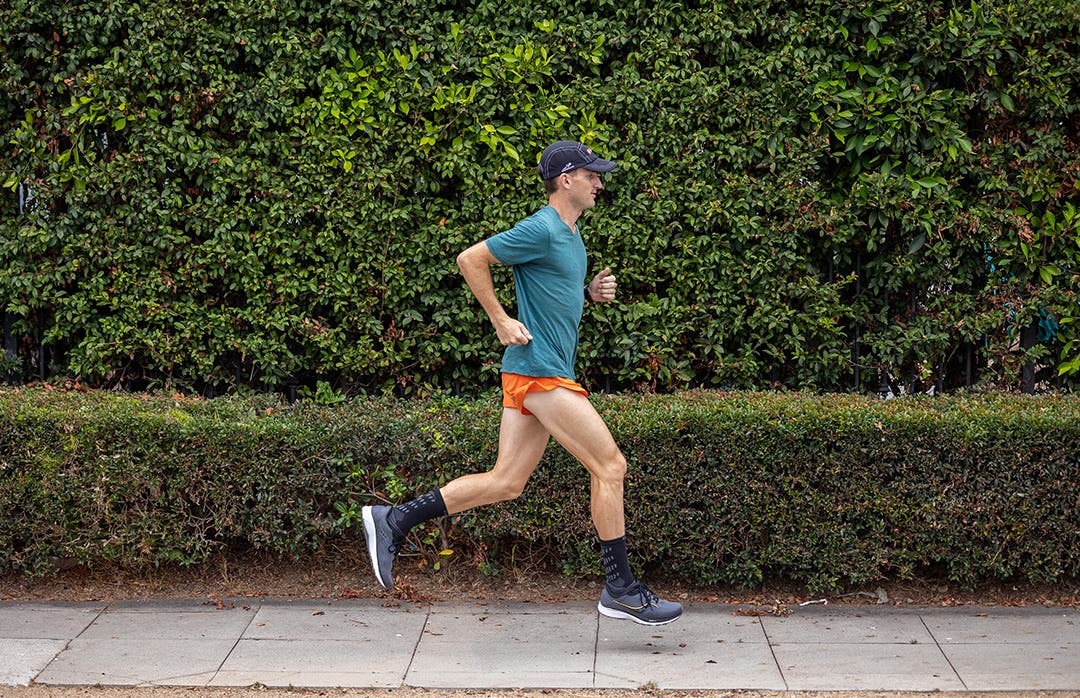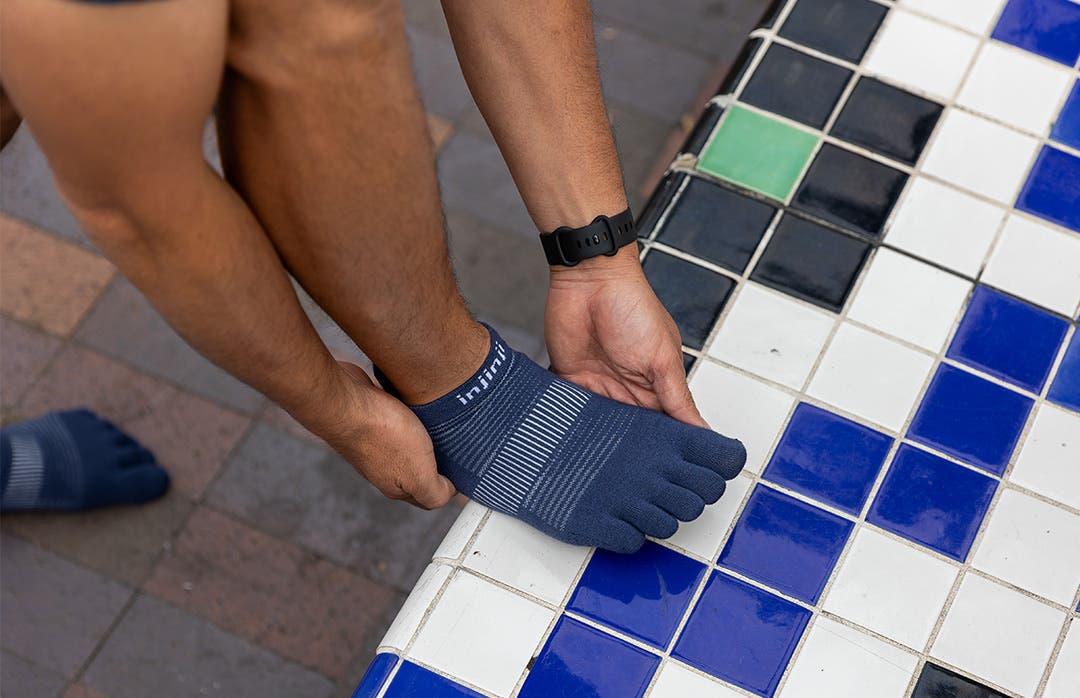Bunions can be a real challenge for runners, causing pain and discomfort during training, races, and everyday life. This guide explores practical solutions and bunion treatments for runners, from footwear to foot exercises and the best socks to keep you moving comfortably.
What are Bunions?
A bunion is a bony bump that develops at the base of the big toe, or sometimes, at the base of the pinky toe. Bunions on the big toe form when the toe shifts inward, which causes the joint to protrude outward. Medically known as hallux valgus, bunions can sometimes cause pain, stiffness, or difficulty wearing certain shoes.
Bunions are very common, and there are ways to manage discomfort and slow the progression.
Why Does My Bunion Hurt While Running?
Because running places repetitive stress on the feet, pressure from impact can cause irritation, inflammation, and pain on or around bunions. If the big toe is misaligned, the joint may rub against the inside of your shoe, leading to discomfort, redness, or even blisters. Fortunately, there are ways to stop bunion pain while running.


Bunion Pain Relief (Without Surgery)
If you have a bunion – whether on one or both feet – knowing the right strategies can help to reduce pain and keep you moving comfortably.
1. Wear supportive footwear
One of the most important steps in managing bunions is wearing properly fitted footwear that can reduce pressure on the affected joint(s). Shoes with a wide toe box provide extra room for your toes to spread naturally, helping to prevent irritation and discomfort. Tip: wearing a pair of Injinji toesocks along with a shoe with a wide toe box can make the world of a difference in spreading your toes!
We recommend Altra running sneakers for a supportive, wide toe box sneaker.
2. Use toe spacers
Toe spacers are soft, flexible devices placed between the toes to help gently realign them into a more natural position. Using toe spacers can help reduce pressure on the bunion, improve toe mobility, and minimize friction and rubbing between your toes. Continue reading about the benefits of toe spacers for athletes on The Wallstreet Journal.
3. Strengthen your feet and toes
When it comes to strength training, we often focus on building power in our legs, core and upper body – but our feet are the foundation of movement and shouldn’t be ignored! Stronger foot muscles can enhance stability, improve balance, and help to decrease the discomfort of bunions.
Here are a few exercises for bunion pain that you can do to strengthen the muscles in your feet:
-
Toe curls: Place a small towel on the floor, and use your toes to scrunch it toward you, then spread your toes wide to push it away. This exercise strengthens the arch and toe muscles, promoting better toe control and stability.
-
Toe spreading: Sit, or stand, barefoot and spread your toes as wide as possible. Relax, then repeat. This exercise encourages toe separation, reducing crowding and bunion pressure.
-
Toe pickups: Place small objects (like marbles) on the floor. Use your toes to pick them up one by one. This improves toe dexterity and strengthens intrinsic foot muscles.
4. Consider orthotic support
Orthotic support can be a game-changer for managing bunions. Over-the-counter or custom orthotics can provide added stability and reduce pressure on sensitive areas of the foot, like the bunion joint.
When worn in sneakers or everyday shoes, orthotics help evenly distribute body weight across your foot, helping to relieve stress on the bunion. Many orthotics feature cushioned padding that reduces impact while walking or running.
When buying over-the-counter insoles, look for those with a wide toe box design, to accommodate wider feet with bunions. Custom orthotics, while more expensive, will be tailored to your foot shape for maximum support.


Running with Bunions
Having bunions does not mean you have to stop running! The strategies discussed above, like choosing wider running shoes, using toe spacers, and strengthening your feet can reduce discomfort and keep you moving pain-free. Making small adjustments to your training routine and footwear can make a big difference.
Because bunions can cause the big toe to push up against the others, it’s common for runners to experience blisters. The best running socks for those with bunions are toesocks. Injinji toesocks eliminate friction and wick sweat between the toes, helping to prevent blisters.
If your bunion, or surrounding area, feels sore while running, consider looser lacing near the toe box to reduce tightness. But as always, listen to your body! If running is painful, take rest days and consult a physical therapist for proper guidance on specific mobility exercises or recommendations to keep you running strong.
Which Socks are the Best for Bunions?
Injinji toesocks help keep toes properly aligned, eliminate friction, and help to prevent blisters, which can be a simple step in bunion pain management. Don’t just take our word for it – here's what customers have to say!
Run Lightweight No-Show ⭐️⭐️⭐️⭐️⭐️
“I have 2 toes that love each other a little too much. This is the only thing I've found that keep them from trying to start a fire in my shoe when I run! Finally blister free! Absolutely the best toe socks out there!” - Shari
Trail Midweight Mini-Crew ⭐️⭐️⭐️⭐️⭐
“Socks are great and really help my feet. I have bunions which cause my toes to rub together. Great quality!” - Kim
Run Lightweight Crew ⭐️⭐️⭐️⭐️⭐
"Wear them for every day, wear them for running with Correct Toes toe spacers, wear them for skiing. They are soft, don’t take up much room in shoes, and don’t fall down my calves. Don’t ever want to go back to ‘normal’ socks.” - Beth
_________
Bunions don’t have to slow you down! With supportive footwear, strength and mobility exercises, and the right gear (like Injinji toesocks and wide toe box sneakers!), you can stay active. Check out our bestselling toesocks for runners and hikers here.








